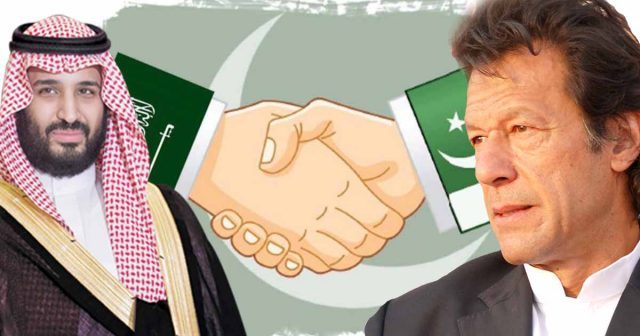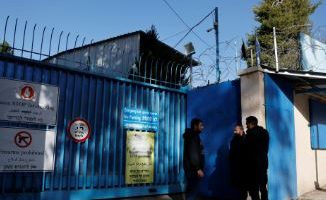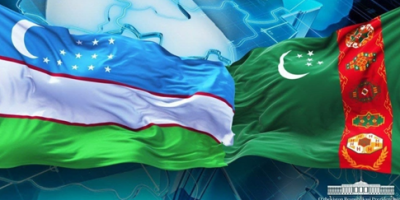Pakistan loops in KSA into perfect alliance: India anxious & Iran nervous

by JAN ACHAKZAI
For the first time, the Kingdom of Saudi Arabia has carved out a robust South Asia policy with Crown Prince Mohammad Bin Salman’s historic visit to first Pakistan then to India having consequences for Pakistan’s rising regional clout, Iran’s nuclear aspirations, Pak-Indo stability, rising Asian energy and vast consumers’ markets and Afghanistan’s peace efforts. In other words, the KSA now is on the balance reorienting it’s calculus to Asian-centric then to American centric policy.
The KSA is facing two challenges: first, domestically, it needs to move the economy from oil dependent to post-carbon economy so as to sustain prosperity and stability in the face of rising population and relatively declining living standards; second challenge is from the outside: the US has reduced its interest and is about to scale down presence and hence influence in the Middle East displaying a more unpredictable and disrupting behavior for the security of old allies like the KSA.
In a nutshell, Pakistan’s balancing act of Saudi-Iran rivalry stems from its desire to have a foreign policy on more rational and pragmatic footing keeping in view the above realities.
In the larger context of the US pruning its interests, geopolitical pressure on the KSA after Khashoggi affairs, Iran’s perceived win in Syria and its growing regional power projection, the war in Yemen, flooding of alternative oil supplies, the KSA feels vulnerable, and looking forward to get more out of its alliance with Pakistan.
Why South Asia Pivot?
Through big investment in Pakistan, enhanced energy and defense cooperation, the KSA is seeking to reduce its insecurities, prevent Islamabad tilting to Iran and leverage Pakistan’s Afghan equities for playing an important role on reconciliation and future engagements in Afghanistan.
Whereas for Pakistan, it is an opportune time to get its ties further reinvigorated with its old ally; as the US is pruning its role as a guarantor of regional security, Islamabad can aptly be taken as a dependable friend and partner for relying on its security guarantees leveraging bilateral defense and security links.
Since Pakistan is being linked with China’s BRI through CPEC flagship project, the KSA’s investment in energy needs of the region and beyond via refineries, minerals, and other sectors, can benefit Islamabad, as such any investment in connectivity and economy to supplement CPEC is a major achievement; already a coherent strategy got Pakistan a long term deferred payments on oil without taking expensive loan, and cash injections to stabile Foreign Exchange reserves, a promise of more Pakistani labor and immediate investment in CPEC, Aviation and social infrastructure and stakes in the exploration of Baluchistan’s Siandak Cooper mine and other mineral sectors, for example amounting to around $15 billion.
Iran is concerned about Saudi investment in a refinery in Gwadar as Tehran’s quest to link Chabahar port with Gwadar may not materialize if the KSA is heavily invested in Gwadar.
Earlier, Pakistan opened up investment in CPEC and welcomed Riyadh’s participation. Despite speculation in the media to the contrary, China has raised no issue. In fact, President Xi already invited the Kingdom to join the BRI project in August 2016 when the Crown Prince visited Beijing.
Iran Equation
Pakistan’s improving friendship with Iran also is likely to weigh on Saudi thinking. Indeed, the Saudi investment is also a side geo-political attempt to offset any possible inroads into Pakistan by Tehran. However, Islamabad has the following factors in mind while dealing with Tehran equation.
Obviously, it has Iran relations as the priority principle of foreign policy imperatives for pragmatic reasons, since International relations are hardly a zero-sum game—one has to balance out ties with one country without hurting other important relations and interests with the other. For the following reasons, Pakistan has to be very friendly with Iran: geographically, having 950 km long border with Tehran, Islamabad cannot afford another hostile neighbor when the region [Baluchistan] we share with Iran remains vulnerable; except for China, Pakistan has hostile borders with both India and Afghanistan.
Politically, Pakistan needs to strike a balance by keeping both countries (Iran and Saudi Arabia) engaged. It is also ever ready to be a mediator between the two countries so the Muslim world is not fragmented further-another imperative of its foreign policy.
Whereas the KSA, economically, is a great supporter as an aid giving the country, oil supplies on comfortable terms, investment in various sectors, hosts 3.5 mill workers who remit around US$ 10 billion and most importantly a country of Holy Places, on the above counts, Iran’s contribution is non-existent.
India has tried its best to seek Saudi Arabia’s cooperation against Pakistan in order to isolate Islamabad under its banner myth: supporting terrorism in Kashmir.
Though the Army Chief Gen Bajwa has been instrumental in improving ties with Iran, Pakistan still needs to reach out to Tehran after a number of new regional geopolitical events and currents obtaining and potentially threatening to strain bilateral relations between the two countries:
— Iran is concerned about Saudi investment in a refinery in Gwadar as Tehran’s quest to link Chabahar port with Gwadar may not materialize if the KSA is heavily invested in Gwadar.
—The abduction of 11 Iranian soldiers in the border region by an extremist group which Tehran believes is sponsored by Saudi Arabia.
—Iran’s focus on the Persian Gulf and Pakistan’s focus on Afghanistan and India create a divergence on issues like Yemen conflict, rival Taliban’s support, India’s anti-Pakistan role in Chabahar port and Islamabad’s continued input in leadership with IMCTC [Islamic Military Counter Terrorism Coalition] alliance.
—The task of securing border along Baluchistan/Baluchistan Sistan region gets more urgent when terrorism in Baluchistan, and in Iran by proxy networks like BLA [Baluchistan Liberation Army], Awaz opposition, respectively, and border extremist groups battering, when Israel getting close to Iran by opening new post in Oman, are new challenges.
When Modi visited the UAE in 2015, Pakistan was the target and it sought to sign up a close ally of Islamabad to endorse its terrorism narrative.
In a nutshell, Pakistan’s balancing act of Saudi-Iran rivalry stems from its desire to have a foreign policy on more rational and pragmatic footing keeping in view the above realities.
Indian Equation
Following his visit to Pakistan, Crown Prince, Mohammad Bin Salman is focused on a very high profile visit to India as part of the KSA’s hyperactive South Asia policy.
India has tried its best to seek Saudi Arabia’s cooperation against Pakistan in order to isolate Islamabad under its banner myth: supporting terrorism in Kashmir. Delhi, particularly under Modi government, has been on the forefront to undermine Pakistan’s standing in the Middle East. However, the KSA has refused to jettison Pakistan in India’s favor. But it is the size of India’s economy ultimately that lures the KSA for investment in energy supplies and enhancement of bilateral trade relations.
Currently, India receives almost $70 billion remittances from Saudi Arabia; trade links are touching over $40 billion. Saudi sovereign wealth is now crossing around 1$trillion marks, offering a huge opportunity to Delhi-the largest trading partner and the largest energy buyer of the KSA.
Such a rosy picture, though, is in contrast with divergences in bilateral relations of the two countries: namely, Iran factor, regional stability, oil prices, India’s hyphenated Pakistan focused Middle East policy and the KSA’s close partnership with Pakistan.
Interestingly, Indian strategists consider it a success if any ally in the Muslim world acts as a counterweight to Pakistan. When Modi visited the UAE in 2015, Pakistan was the target and it sought to sign up a close ally of Islamabad to endorse its terrorism narrative.
Islamabad as has to move from geopolitics to geo-economics to become another important Asian dragon (as the Chinese would call it).
On the other hand, Delhi’s strategic partnership with Iran is a cause of concern for the KSA but it does not want to push hard Delhi which is ultimately going to be a rising economic power of South Asia with its GDP touching around $7 trillion estimated figures by 2030, as such unlikely loose a big energy-intensive market for geopolitical considerations.
In order to offset India’s exponential economic power differential by 2030 and permanently loops in the KSA through increased share of economic component in bilateral relations, Pakistan needs to find new ways and means to be an overall attractive economy by enhancing CPEC investment of third parties from Russia to EU expanding Chinese public and private investment in its special economic zones seizing opportunity to be a hub as re-exporting zone for Chinese giants.
Islamabad as has to move from geopolitics to geo-economics to become another important Asian dragon (as the Chinese would call it). For now, Pakistan has succeeded to secure Saudi Arabia into a perfect alliance, sending India anxious and making Iran nervous.
Courtesy Global village space
Related News

Ministers condemn Israeli storming of UNRWA’s east Jerusalem headquarters
ISLAMABAD, DEC 12 /DNA/ – The Foreign Ministers of the Islamic Republic of Pakistan, theRead More

Transport integration in Central Asia: the contribution of Uzbekistan and Turkmenistan
BY IBRAHIMOVA DILDORA Transport cooperation between Uzbekistan and Turkmenistan is now taking on strategic importance,Read More


Comments are Closed